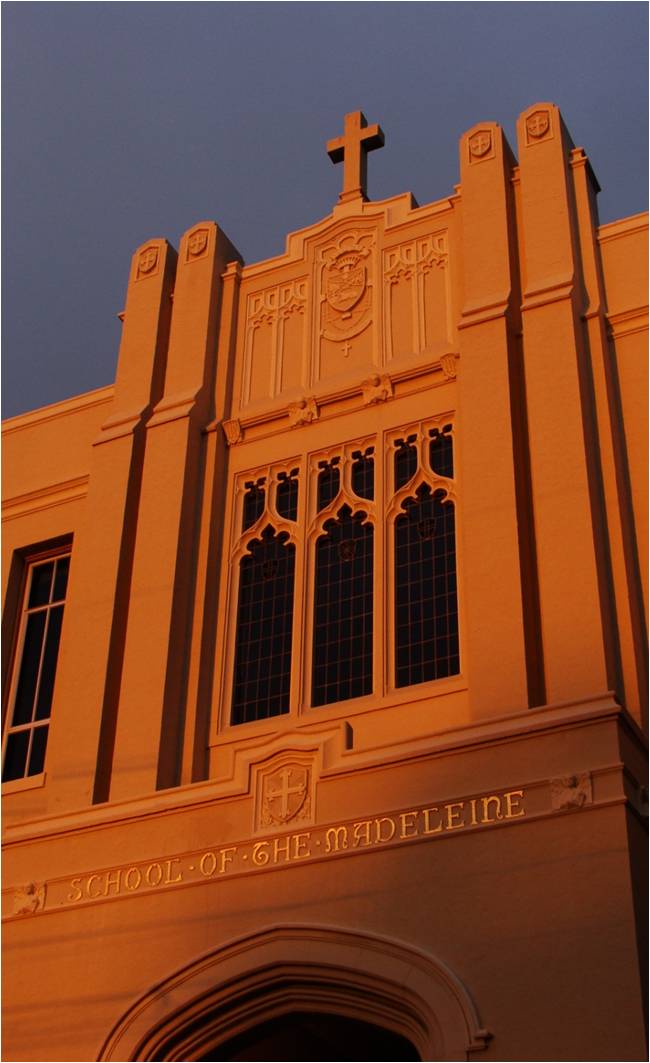You would be surprised how hard it is to light a candy bar on fire. Last week I had an inspiring adventure in middle school science education: I was invited to help my son Robert and his classmates burn food for science. Robert is an eighth grader at a Roman Catholic school in Berkeley, California, the School of the Madeleine. With very high academic standards the Madeleine achieves excellent results, and its alums move on to fine universities and distinguished careers.
On Tuesday morning the middle school science teacher, Ms. Theresa Parini, needed a parent to assist with a lab on calorimetry, and asked if I had free time and was comfortable with fire. (She didn't realize that my sons and I typically make bonfires with twenty-foot-tall flames as we maintain eighty acres of woodlands in the northern Bay Area!) Since I’m always eager to help directly promote science education—that's what we're all about at the National Center for Science Education—I was happy to volunteer my time. The students were going to burn various types of food beneath a container of water to measure their caloric value.
They had great fun incinerating marshmallows, hazelnuts, cashews, walnuts, tortilla chips, and various candies. I can report that Oreo cookies don’t burn very well, and we couldn't light the Mars Bars on fire at all. Walnuts have more oil and thus burn with greater alacrity than do hazelnuts; the corn chips flared so hot that they melted the clay footing of the sample-holding apparatus!
Robert Hess ardently preparing to ignite a food sample
In addition to perennial pyromaniacal pleasure derived from lighting things on fire, I think the students had a lot of fun working with the scientific process itself. They learned how to estimate the calories contained in a given portion of food by measuring the increase in temperature of 10 ml of water in a beaker suspended over the flame in the combustion chamber. As they burned various food items, I noted that they were carefully recording temperature changes on their charts.
Having taught since 1980 at a number of Catholic high schools and universities, I have observed the manifold ways in which science education sits comfortably within a Catholic school framework. Of course, to conduct this particular experiment with any degree of precision you would need to use a bomb calorimeter, a lab tool that costs thousands of dollars. Both private and public school science teachers have to make do with substandard and ad hoc lab equipment because of the woeful underfunding of science classes everywhere. Nevertheless, we managed quite handily with Ms. Parini’s ingeniously devised beakers made of aluminum cans and a burning apparatus fashioned out of modeling clay and paper clips. (Plans for enhancing the school's science program with more durable and up-to-date lab equipment are in the works.)
Probably the most important thing the students took home from this experiment was the knowledge that it is empirically possible to measure and obtain results about the caloric content of food. The directions for the procedure were clear and the results understandable, so on balance the lesson was quite successful. Ms. Parini’s class demonstrated that while state-of-the-art lab equipment might make experiments easier and more precise, the essence of science and the scientific method can be communicated quite clearly in almost any classroom.
Students recording the water temperature raised by incinerating a tortilla chip
One measure of the quality of a science teacher is her success in showing students how to work through an experimental procedure to draw a conclusion—in this case, the amount of heat given off by the oxidation of food. Another measure—in a country rapidly losing its accustomed position of prominence in this field—is how a teacher empowers her students to enjoy the study and practice of science. One student told me as we cleaned up the lab tables, “the reason I really like science is that if something doesn’t work the first time around, you can always try to figure out why it didn’t work, and then adjust the conditions and go back to try to obtain a measurable result.”
I will be very interested in seeing how this class explores the subject of biological evolution after the Christmas break. Evolution is the central unifying principle of biology, and understanding it is essential to middle school students’ understanding of how all life on earth—including human life—descends from a common an cestor around 3.5 billion years ago during the Eoarchean Era. I would hope that this science unit includes a visit to the University of California's Museum of Paleontology, or at least that it includes familiarizing students with the museum's Understanding Evolution website.
cestor around 3.5 billion years ago during the Eoarchean Era. I would hope that this science unit includes a visit to the University of California's Museum of Paleontology, or at least that it includes familiarizing students with the museum's Understanding Evolution website.
Because the Madeleine is a Roman Catholic School, no doubt some teacher will at some point lead the students in a discussion of the implications for religious belief of an evolutionary world view. Based on their Catholic philosophy of education I hope they will point out to the students that the last three popes have endorsed evolution not only as being scientifically true, but also as being consonant with Catholic theology (see, for example, Communion and Stewardship, paragraph 63). However, based on my own fifteen-year experience with the School of the Madeleine, I fully expect that in the science classroom and on field trips, the only framework within which evolution will be explored will be a scientific one.
